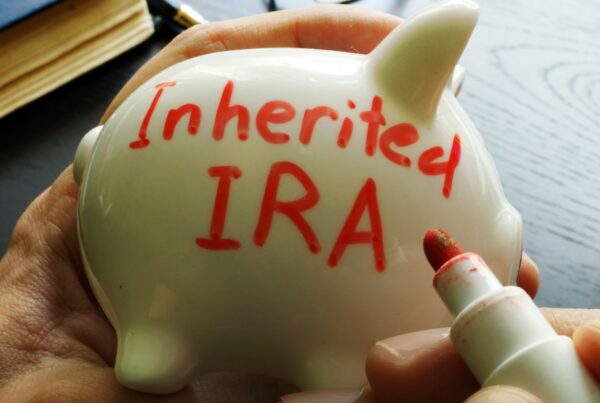We all are aware that 401(k) contributions provide a tax-deferred vehicle as a means of saving for retirement. Often overlooked is that the predominant type of plan that includes 401(k) contributions is a profit sharing plan, and 401(k) contributions are one of several possible types of contributions to a profit sharing plan. In addition, many of us know about matching contributions, but there are various other different ways to structure profit sharing plan contributions to help meet retirement goals of your business and personal financial plans.
First, some quick facts:
- A business does not have to have profits to make a profit sharing contribution. The term “profit sharing plan” was part of the vocabulary in common use when the rules were written and the term persists today even though the requirement to have profits has long since been removed.
- The decision to make a profit sharing contribution for any year can be totally discretionary. You can wait until plan year end to decide whether to make a contribution to the plan, and if so, how much to contribute. This discretion allows you to set aside more for retirement in good years and to set aside less or even skip a contribution in other years.
- A profit sharing plan can have more than one allocation formula to determine how much each employee shares in the contribution. As we will see below, different formulas can satisfy different business and personal objectives.
Being aware of the demographics of your business and of your personal retirement goals are crucial to optimizing profit sharing plan design. Here are some selected examples.
Acknowledging Ownership
Your business started with a great idea, a few owners, and limited capital. It grew with some good planning, good fortune, and personal sacrifice. At the same time, your children grew up, college tuition blew up, and what seemed like a long time until retirement is not so long any more. You have a strong group of employees who generally are younger. The plan could allow the owners to make up for lost time in accumulating retirement assets.
Acknowledging Payroll Costs
Your business is subject to large variances in year-to-year revenues. All employees are relatively close in age, and generally the owners earn above $150,000 a year in good years and employees on average earn under $75,000. The plan could consider that the business already pays a lot in payroll taxes for each employee.
Acknowledging Common Interest
The business communicates to all employees that everyone is expected to contribute to the success of the business and everyone can expect to participate in that success. The plan could be a pure profit sharing plan where more profits equals more for retirement.
With so many alternatives available and different ways a profit sharing contribution can be shared among owners and employees, it is reasonable to ask whether the IRS will have concerns about whether the plan discriminates in favor of owners or highly paid employees. The IRS is concerned primarily about whether the contribution is shared fairly among employees. The flexibility in plan design stems from the fact that the IRS allows for different methods of determining what is fair. Broadly speaking, a plan can be considered fair if the contribution to each employee when expressed as a percentage of each employee’s compensation is within the IRS rules, i.e., a “compensation based formula”. Or, a plan can be considered fair if the amount of retirement income that can be bought today for each employee with the contribution made for each employee is within the IRS rules, i.e., a “new comparability formula”.
Here are some illustrations. Assume that Betty is age 60 and earns $170,000, and Bob is age 35 and earns $50,000.
If the contribution formula is a compensation based formula that says each employee gets 5% of compensation, then the company would contribute a total of $11,000 to the plan (5% of $220,000). Betty would get $8,500 (5% of $170,000) and Bob would get $2,500 (5% of $50,000).
If the contribution formula is a new comparability formula that says the total $11,000 company contribution will be used to buy the same amount of benefit for each employee payable at age 65. Betty would get $9,734 and Bob would get $1,266. Why does Betty get more than Bob? The amount of benefit payable at retirement includes an assumption that the contribution made today will grow investment income up to age 65. Betty has only 5 years for her contribution to grow until retirement, while Bob has 30 years.
In a variation on the compensation based formula, the profit sharing plan can recognize that businesses contribute 6.2% of an employee’s compensation to fund the OASDI portion of Social Security. This portion of FICA taxes essentially funds a retirement benefit for the employee. But, the 6.2% is capped at the Social Security Taxable Wage Base (SSTWB – $117,000 for 2014) and Social Security retirement benefits also are capped based on these limits. The plan’s formula can be “integrated with the SSTWB”. Under this formula, each employee gets a contribution equal to a fixed percentage of compensation. An employee that earns more than the SSTWB gets an additional contribution on compensation that is above the SSTWB. In our example, if the plan formula was integrated with the SSTWB, then $11,000 total company contribution would be shared with Betty receiving $8,985 and Bob receiving $2,015.
This brings us back to the primary question of how best to use the power and flexibility of a profit sharing formula to meet business and personal retirement objectives. Using our examples from above:
- To Acknowledge Ownership after years of sacrifice, consider a new comparability formula.
- To Acknowledge Payroll Costs, consider a formula integrated with the SSTWB.
- To Acknowledge Common Interest, consider a compensation based formula.
Keep in mind that the 401(k) savings opportunity is available to all, that the profit sharing contribution is flexible and discretionary, and that the starting point is a sound financial plan.
[author] [author_image timthumb=’off’]https://sensenigcapital.com/wp-content/uploads/2014/05/atr-featured.jpg[/author_image] [author_info]A. Paul Protos is a founding Principal of ATR, Inc., a defined contribution plan consulting and third party administration firm. ATR, Inc. was founded in 1990 and takes its name from a commitment to provide accuracy, timeliness, and responsiveness to their clients. They take a consultative approach to client service where the first step in the relationship is to listen. Prior to ATR, Inc., Paul worked 15 years with one of the Big Four accounting firms, rising to Partner and the role of the National Practice Leader for Defined Contribution Services. To learn more about Paul and his firm’s services please click here.[/author_info] [/author]


